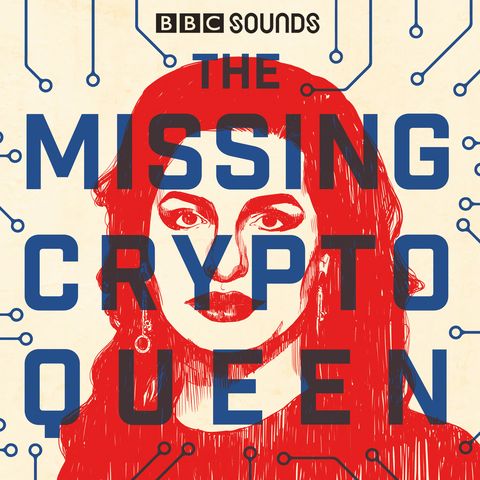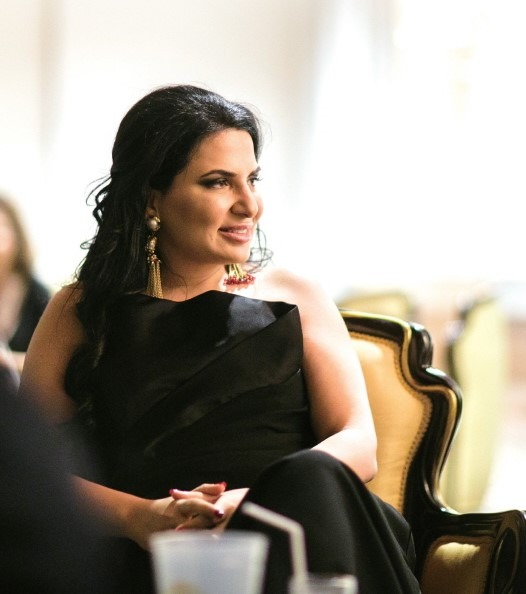The distinctive voice of Joe Duffy purred: “Edward O’Sullivan, good afternoon.”
It is the final item on Duffy’s popular RTE phone-in show Liveline on October 11, 2017.
“You contacted us Edward about this new phenomenon called OneCoin,” Duffy begins, before asking: “And you reckon your money is gone?”
“Oh yes, definitely,” replied O’Sullivan, a Tipperary native who invested €910 in OneCoin in August 2015 after being pestered to do so by an unnamed “gentleman”.
“I was just fed up with him going on, and on, and on [about OneCoin],” O’Sullivan explained to Duffy, adding he forked out for seven starter OneCoin packages for his family at over €100 each. OneCoin, he was reassured, was the “new Bitcoin”, a reference to the digital currency that was, in 2015, on something of a streak.
Lots of Irish people had made money on Bitcoin, at least on paper. So, this made it easier to convince others to buy OneCoin. In a very short space of time from 2015 on, selling OneCoin became a big, if under the radar, business in Ireland.
“This gentleman said he had put about 2,000 people into [OneCoin],” O’Sullivan said. “The average price is €1,000 per individual. He brought in about €2 million worth of business. He declared this openly at meetings.”
O’Sullivan said OneCoin was sold around the country at seminars, attended by between 80 and 120 people. The individual he was dealing with was just one of many others encouraging people to buy OneCoin.
“There must have been two to three seminars a month,” O’Sullivan said, and these were only the events that he was aware of. At one stage, he recalled, a European Ambassador for OneCoin flew into Ireland.
“The Ambassador would have a kind of razzmatazz ceremony in a hotel,” O’Sullivan recalled.
After a while, O’Sullivan became aware of postings on the internet warning about OneCoin.
More and more investors were complaining that they could not cash in their OneCoin, which the internet said had surged in value.
“In Ireland when we rang the regulator and the Central Bank [and asked about OneCoin] they basically said…”
“‘Nothing to do with us.’” Duffy interjected.
“That is what they said,” O’Sullivan sighed.
Duffy then asked O’Sullivan what kind of Irish people were investing in OneCoin. The answer: mainly men aged between 50 and 65.
“The promoter he said: ‘We like to welcome Toms to the meeting.’ We asked him ‘What do you mean by Toms?’ and he said: ‘We like to invite people who will trust you, looking for an opportunity and have the money.”
The missing Cryptoqueen
For the last nine months journalist Jamie Bartlett has been looking for a Bulgarian businesswoman called Dr Ruja Ignatova. Bartlett has written books on the darker reaches of technology, and he was drawn to Ignatova as he began to find out more about OneCoin.
In 2014, the Bulgarian businesswoman launched OneCoin with the promise it would change money forever.
In the space of just two years she and her supporters convinced millions of people to hand over €3.3 billion in cash to buy OneCoin.
Then, having become super-rich and famous in the world of fintech as an evangelical figure promoting her digital currency, Dr Ignatova suddenly vanished.
There is another big Irish connection, albeit an unwitting one: Bank of Ireland.
Bartlett has made a BBC podcast series called The Missing Cryptoqueen. Each week he releases a new episode describing his hunt for the missing woman. Gradually, he is uncovering an international web of greed, lies and herd mentality.
In Britain his podcast on OneCoin is one of the most listened to, with hundreds of thousands downloading its unravelling story of financial losses for many, and riches for a few.
“OneCoin claimed to have over 3.5 million members, but we’d estimate that around 1 million people have invested in OneCoin – from at least 175 countries. I can’t think of another crypto-scam that has affected so many people in so many parts of the world,” Bartlett tells me.
As part of his research Bartlett has gained access to a unique database which reveals billions flowing into the coffers of whoever is ultimately behind OneCoin.
Bartlett is prepared to share this data with The Currency. It contains sales information about many different countries, including Ireland.
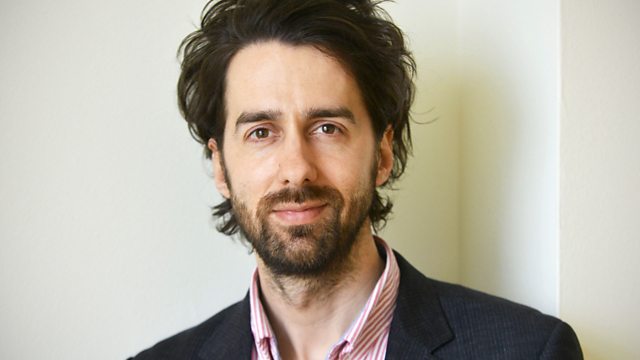
“All I can say is that this data comes from a very reputable source, someone who would have access to this sort of information. And we have carefully examined it and believe it to be accurate. I can’t say more than that,” Bartlett says.
“Examining this data, we can say that in total, between August 2014 and March 2017 over 4 billion Euros was invested into OneCoin. On a country by country basis, we think that €1.47 million was invested by Irish investors between January and June 2016 alone.”
“Almost certainly the total from Ireland will be higher. This was a very small window of time and OneCoin was continuing the grow in mid-2016, so it’s almost certain that the number will be greater. In the UK for example, we know €29 million was invested between January and June 2016, but we estimate the total to have been approximately €100 million overall. So, we might assume in Ireland it would be significantly higher than €1.47 million.”
Investors, who appear to have lost all their money, are not the only connection to Ireland.
There is another big Irish connection, albeit an unwitting one: Bank of Ireland.
The ‘bitch of Wall Street’
On March 8, 2019 the Manhattan US Attorney’s Office announced that it had arrested one of the leaders of OneCoin, Konstantin Ignatov, at Los Angeles International Airport. Ignatov is the brother of Dr Ruja Ignatova, the difference in spelling of their surnames merely indicates gender.
In a detailed press release Geoffrey S Berman, the United States attorney for the county of New York, said he had ordered the arrest of Konstantin Ignatov with the assistance of the FBI and special agents from the Internal Revenue Service Criminal Investigation.
An indictment for his missing sister Ignatova was also unsealed.
Both face charges related to wire fraud, securities fraud and money laundering based on misrepresentations that US prosecutors allege took in “billions of dollars worldwide” in return for “fraudulent cryptocurrency”.
“As alleged, these defendants created a multibillion dollar ‘cryptocurrency’ company based completely on lies and deceit,” Berman explained. “They promised big returns and minimal risk, but, as alleged, this business was a pyramid scheme based on smoke and mirrors more than zeroes and ones. Investors were victimised while the defendants got rich.
“As alleged in the indictment, these defendants executed an old-school pyramid scheme on a new-school platform, compromising the integrity of New York’s financial system and defrauding investors out of billions,” New York County District Attorney Cyrus R Vance Jr added.
“Our office urges all crypto investors to scrutinise investment opportunities, recognise the prevalence of fraud in this underregulated space, and proceed with caution.”
FBI assistant director-in-charge William Sweeney Jr also had his say: “As we allege, OneCoin was a cryptocurrency existing only in the minds of its creators and their co-conspirators. Unlike authentic cryptocurrencies, which maintain records of their investors’ transaction history, OneCoin had no real value. It offered investors no method of tracing their money, and it could not be used to purchase anything.”
The numbers being investigated are staggering.
There is no suggestion however that the thousands of people who promoted OneCoin around the world, including in Ireland, knew what its founders were allegedly up to. Eyebrows might have been raised by the speed at which OneCoin claimed to be surging in value, from 50 cent at the start to a peak of €29.95 in January 2019.
In an email uncovered by investigators she said the first option she was thinking about was: “Take the money and run and blame someone else for this…”
Unlike a real crypto currency like Bitcoin, however, prosecutors allege there was nothing underlying OneCoin like a proper blockchain. It is alleged that this allowed its founders to set its value as they wanted, causing investors to believe they were making fortunes. In reality, they were not.
Between the final three months of 2014 and the last nine months of 2016, OneCoin took in €3.3 billion earnings its founders “profits” of €2.2 billion, according to US prosecution documents. A sophisticated multi-level marketing network was set up to draw more and more people in from offering starter packages at €110 each, to so-called tycoon packages at €55,000.
As the money flowed in Ruja Ignatova fretted about what to do with it all.
In an email uncovered by investigators she said the first option she was thinking about was: “Take the money and run and blame someone else for this…”
Unsealed indictment documents reveal more of Ruja Ignatova and her brother Konstantin Ignatov’s thinking. In an email she tells her brother: “It might not be [something] really clean or that I normally work on or even can be proud of (except with you in private when we make the money) – but…I am especially good in this very borderline cases, where the things become grey – and you as the magic sales machine – and me as someone who can really work with numbers, legal and back you up in a good and professional way – we could really make it big – like MLM (multi-level marketing) meets bitch of wall street ;-).”
She then tells her brother how they will use OneCoin to draw in investors, by offering them ever escalating returns.
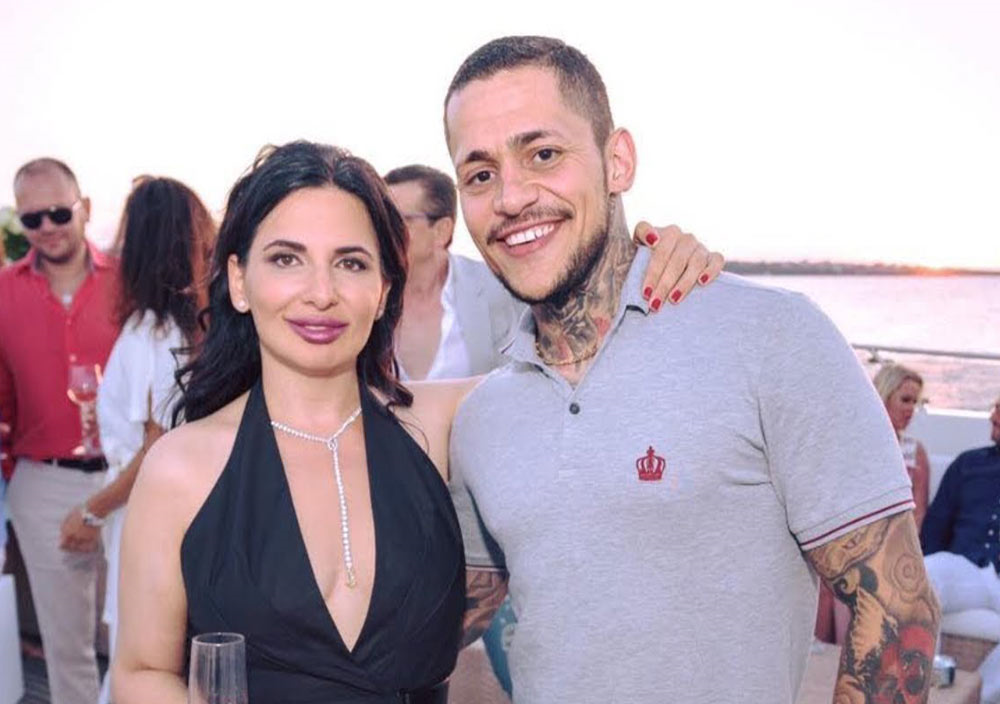
In unsealed documents, FBI agent Ron Shimko says that he believes this email shows OneCoin was set up in a manner designed to give a “false promise” of huge returns.
On June 9 2014, Ruja Ignatova admits in an email that she wants to be able to not only set the price of OneCoin but also control its volume. “We can manipulate the exchange by simulating some volatility and intraday pricing,” she confides. “Always close on a high price…build confidence – better manipulation so they are happy.”
OneCoin, emails show, was pretending to be mining more coins, like Bitcoin does, when its founders were just issuing more coins whenever they wanted.
As OneCoin took off, Ruja Ignatova became worried at the wall of money flooding in. She told her brother in an email: “This is the implication from the big sales 4 weeks ago. 1.3 [billion] fake coins. We are fucked, this came unexpected and now needs serious, serious thinking.”
With so much real money pouring in, it needed to be stored somewhere.
“By way of background, Mark Scott is establishing an investment business that will operate out of Ireland. Mark is hoping to establish a relationship with a bank in Ireland that can look after his needs,” the introduction said.
According to FBI agent Ronald Shinko: “To date, the investigative team has identified approximately $1.2 billion in OneCoin investor funds, a substantial part of which has been laundered through financial institutions located in at least 21 different countries including Hong Kong, Singapore, the United States, the Cayman Islands, the Isle of Jersey, the Republic of Ireland, and the county of Georgia.
“The investigative team has traced approximately €185 million in funds derived from the OneCoin scheme laundered through a series of bank accounts to an investment fund in the United Arab Emirates [the ‘UAE Investment Fund’].
“Specifically, between in or about February 2017 and in or about April 2017, a purported investment fund with an account at a bank in Ireland [the ‘Ireland Fund’] sent approximately 11 wire transfers totalling €185 million to the UAE Investment Fund.”
The ‘Ireland Fund’, it would later emerge, was held in Bank of Ireland. But how did one of Ireland’s pillar banks get, unknowingly, dragged into a huge financial investigation?
A Phoenix in the Middle East
On March 11, 2016 an Irish solicitor in respected law firm Mason Hayes & Curran introduced through email Mark S Scott to Greg Begley, a Bank of Ireland official, as well as copying a number of other bank officials including Deirdre Ceannt, assistant vice president Bank of Ireland corporate and treasury, in its Burlington Road, Dublin 4 office.
“By way of background, Mark Scott is establishing an investment business that will operate out of Ireland. Mark is hoping to establish a relationship with a bank in Ireland that can look after his needs,” the introduction said.
“Perhaps you can start a conversation around this following this email and I would be happy to assist in any way that I can.”
These types of introductions are made all the time in business, and the introduction was made entirely innocently.
Scott had a reputable track-record as a partner in a US law firm. There was nothing about him to set off any alarm bells. (Scott himself has consistently denied any wrongdoing).
Deirdre Ceannt replied to Scott saying that she worked with Begley on the foreign direct investment team in Bank of Ireland corporate banking. She said she would be happy to talk to Scott, asking him to fill in a questionnaire about his business so her bank could determine how best to help him.
On March 13, Scott replied. He sent the bank legal documents relating to a company based in the British Virgin Islands which, he said, owned the investment company he worked for called the Fenero Funds.
A new company based in Ireland, called Fenero Equity Investments (Ireland), was set up. According to the questionnaire Scott filled in for Bank of Ireland, this Irish company expected turnover in its bank account to be between €10 million and €25 million a year.
Bank of Ireland designated Fenero as ‘high-risk’ because it was based in the British Virgin Islands.
He said Fenero was a $100 million fund that managed the fortunes of four rich European families. Scott claimed to have worked with these families on deals worth over $2.1 billion over the years. The new fund, Scott claimed, planned to pool the resources of the families to invest in businesses – from start-ups to turnarounds to established corporates.
Bank of Ireland designated Fenero as ‘high-risk’ because it was based in the British Virgin Islands. The British Overseas Territory in the Caribbean has a huge offshore financial services industry. It is not that uncommon for Irish banks to end up dealing with businesses domiciled there.
In 2017, Fenero wished to make a payment to the United Arab Emirates to a company called Phoenix Fund Invest. This raised a red flag internally in Bank of Ireland, which began to ask questions. On May 19, 2017, arising from her concern, Ceannt asked for more information from Scott about this deal.
She asked to know what the money was for, who was the Phoenix Fund and sought more information about Fenero.
Three days later Scott replied: “Can we simplify this process by simply returning the money to Fenero?”
Scott claimed this was to save time on administration, and that the individuals behind Fenero would just send the money on to the Phoenix Fund themselves.
The way the US solicitor presented it, he just wanted to get on with getting the money to the Middle East. He tried to brush aside Bank of Ireland by insisting it was simply creating red tape with all its questions.
Prosecutors would later allege in opened pleadings that Scott was deliberately deceiving Bank of Ireland, and that he tried to pull out of the transaction to prevent the bank discovering what he was up to.
Scott, US prosecutors claim, had “agreed to launder the proceeds of the OneCoin fraud scheme.” This allegation is denied by the US lawyer.

FBI agents in Dublin
At 2.40pm on March 28 2019 three United States special agents showed up at Bank of Ireland’s headquarters at Burlington Plaza, Dublin 4. Ron Shimko from the FBI was there, and with him were John Abram and Leo Rovensky, who were with the Internal Revenue Service Criminal Investigation team. Over one hour and 40 minutes, they interviewed Greg Begley as a witness in their investigation into Mark Scott. Begley cooperated fully. He recognised and confirmed documents as they were presented to him. “Begley stated that he did not notice any red flags or have any concerns while dealing with Scott,” Rovensky noted in a four-page document recording the meeting.
Evidence via CCTV
On September 29, 2019, the United States government submitted legal documents setting out how they planned to take testimony from four Bank of Ireland officials via closed circuit television in its case against Mark Scott. The bank officials have declined to travel to America to give evidence, as they are entitled to, but they are cooperating fully as witnesses, albeit from Dublin.
The four witnesses include Ceannt and Begley, who communicated with Scott. Diane Sands, head of Bank of Ireland’s anti-money laundering team, will give evidence about the bank’s internal processes, its decision to designate Fenero high-risk, and what Fenero was supposed to do but had not.
Taken together, the US government believes that the Bank of Ireland witnesses can show how Scott “successfully laundered hundreds of millions of dollars of OneCoin proceeds through BOI without detection.”
The final witness to give evidence is Derek Collins. Collins was executive vice president and relationship manager with BOI in 2016. He met Scott and took notes at the time. Collins says he was told by the US lawyer that he planned to invest Fenero’s funds in financial services and telecoms.
Collins proposed evidence is described by prosecutors as “powerful evidence” of Scott’s alleged guilt, as “they reveal his deliberate intent to mislead the bank about the source of the funds, and to hide the fact that the Fenero funds, and the Bank of Ireland Fenero accounts were being used to move OneCoin proceeds.”
Taken together, the US government believes that the Bank of Ireland witnesses can show how Scott “successfully laundered hundreds of millions of dollars of OneCoin proceeds through BOI without detection.”
Scott has denied all wrongdoing. He has objected to evidence being given by CCTV. His case is scheduled to begin on November 4.
Asked for comment on OneCoin and the Scott trial, Bank of Ireland, said: “We continue to liaise closely with the US authorities in relation to this case. As this relates to an ongoing legal case we are not in a position to comment further.”
Unregulated crypto
Peter Oakes is a former director of enforcement and financial crime at the Central Bank of Ireland (CBI). He served during the bank’s most tumultuous years in the immediate wake of Ireland’s financial crash.
Since then he has served on numerous fintech boards as well as a director of established international banks. He is knowledgeable about cryptocurrencies and agreed to give his views on OneCoin. In his view, there was a number of issues that the Central Bank of Ireland must consider.
“The initial regulatory issue I would think of is whether or not the bank reported its suspicions of money laundering to the FIU (Financial Intelligence Unit of An Garda Siochana) and copied at the same time the Revenue Commissioners,” he said.
“If it did, how soon did it do so upon becoming suspicious. If it didn’t report or it failed to spot something it should have identified (i.e. was it the prosecutors which brought the issue to the bank’s attention) why did it miss what was suspicious since they were aware that the client would likely be a higher risk client,” he added.
“If they discovered an existing client had pivoted from non-crypto assets to crypto assets, they would like look to end the relationship regardless if they thought or not the company pivoted for a criminal intent.”
Peter Oakes
“The Central Bank might be interested if BOI’s conduct was contrary to what the CBI knows of the bank’s risk appetite and risk based assessment or one of the procedural failures referenced occurred.”
I asked Oakes was he surprised that cryptocurrency was used to commit fraud? “Crypto appears to be the vehicle through which the fraud was layered,” Oakes replied. “It is no different if layered via another asset class, e.g. proceeds of dirty money layered in the mutual funds market.”
Do Irish banks need to be more wary about digital currencies? “Evidence I have seen is that Irish banks are continuing to de-risk. If a bank knew a company was involved in crypto trading, holding it, being the custodian, being a bitcoin exchange it would most likely pass on offering services,” Oakes said.
“If they discovered an existing client had pivoted from non-crypto assets to crypto assets, they would like look to end the relationship regardless if they thought or not the company pivoted for a criminal intent The compliant I hear now is that Irish banks cannot delineate between companies involved in building blockchain / distributed ledger technology / smart contracts and crypto firms. These companies don’t invoice or accept crypto for their work, but the word blockchain is synonymous with crypto/bitcoin in the minds of the banks.”
I tell Oakes that The Currency has seen documents showing Irish people putting millions into OneCoin. What advice would he give anyone thinking of investing in cryptocurrency?
“Crypto is not a regulated asset, and intermediaries, exchanges and electronic wallets generally are not regulated and even if they happen to be regulated (e.g. a bitcoin wallet offered by an EU licensed e-money institution) for fiat aspects that regulation doesn’t translate to the crypto piece,” Oakes said.
“There is no bank type depositor protection scheme, there is no financial service ombudsman scheme and there is no visa/mastercard charge back avenue. If you buy crypto, you should only use an amount of money that you are prepared to lose, like waging a bet.”
The Central Bank responds to queries on OneCoin
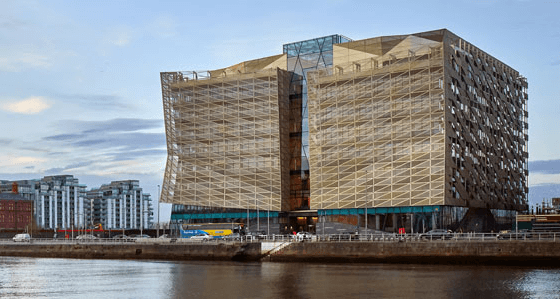
The Currency submitted a number of questions to the Central Bank about OneCoin, as there is evidence that hundreds, possibly thousands, of Irish people have lost their money. It said: “The Central Bank of Ireland does not comment on individual firms. However, cryptocurrencies and their exchanges / platforms are currently not regulated and do not currently require an authorisation or licence from the Central Bank of Ireland.”
It said it had published both explanations and warnings on its website to inform consumers about the risks of digital currencies. Asked was it assisting the various investigations into OneCoin it said: “The Central Bank does not comment on individual firms. The Central Bank will continue to engage with the European Supervisory Authorities and others, on the issue of crypto-assets, to ensure that the risks are appropriately identified and managed.”
It declined to comment on Bank of Ireland and its involvement in the Scott court case.
Last seen on a Ryanair flight
Evidence of OneCoin events in hotels and halls around Ireland are littered across Facebook and other social media. Muscular overseas men in loud suits can be seen extolling its virtues.
On YouTube there are videos about OneCoin voiced by Irish people. Calls to Irish mobile phone numbers connected to these videos ring out. Only faint traces on the outer reaches of social media mark OneCoin’s once presence in Ireland, as a business that took in at the very least €1 million from hundreds perhaps thousands of believers. But where is its founder?
The FBI’s legal attaché in Bulgaria says that flight records show that Dr Ruja Ignatova on or about October 25, 2017 took a Ryanair flight from Sophia, the capital of Bulgaria, to Athens in Greece. Flying on a budget airline, the FBI notes, was unusual, as she often used private jets. Ruja Ignatova disappears, from the moment she lands in Athens.
“Dr Ruja is an enigmatic figure. She appeared from nowhere in 2014, and was heralded as a crypto-currency genius.”
Jamie Bartlett
The FBI says that it believes she vanished out of fear of possible prosecution or arrest. On the Internet however there are still those who refuse to believe the claims of US prosecutors about OneCoin, being a giant scam.
In statements OneCoin, or whoever is behind it these days, has rejected all allegations and stated that it is a legitimate cryptocurrency.
“Our wish and aim is the [OneCoin] is to be traded to much further extent,: it says.
It says it has two “technical papers” showing that it is real.
In a statement to Bartlett and his BBC podcast OneCoin complains that it is “being slowed down by authorities, regulators and haters.”
Bartlett isn’t giving up his search.
“Dr Ruja is an enigmatic figure. She appeared from nowhere in 2014, and was heralded as a crypto-currency genius. What we know for sure is that she was born in Bulgaria but moved to Germany when she was young.”
“She was clearly academically gifted and ended up getting a degree from Oxford University. She then went on to work at McKinseys. As OneCoin started to grow she obviously started to make a lot of money – and started investing in all sorts of properties, and became something of a celebrity even. Tom Jones sang at her birthday party.”
“But then in October 2017, she took a flight from Sofia to Athens and disappeared. No-one has seen her since. She has been charged in absentia in the US for fraud, but she’s still missing. Where is she? I can’t tell you that! You’ll have to keep on listening.”
Listen to Jamie Bartlett’s podcast The Missing Cryptoqueen:
